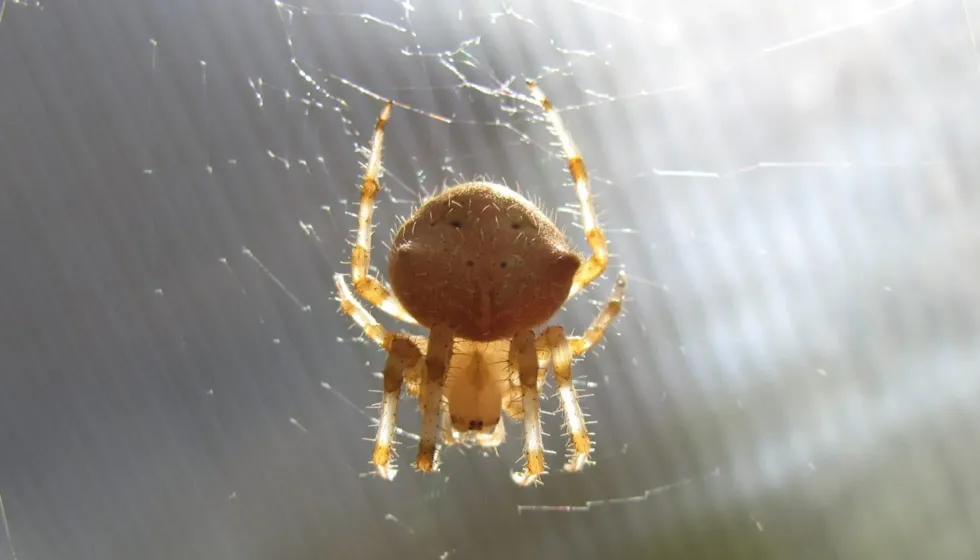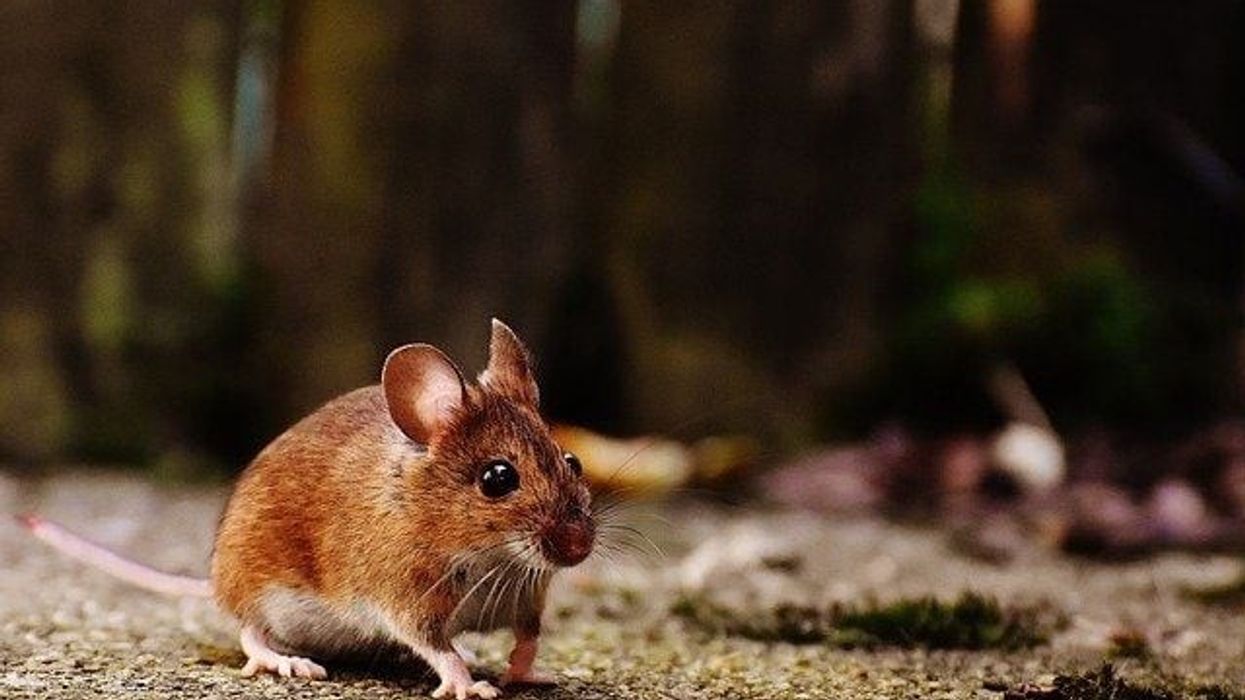The cat-faced spider, also known as the jewel spider, is a unique-looking spider whose large abdomen has an uncanny resemblance to a cat's face. This animal belongs to a class of arachnids and is often seen living on house windows, porch light areas, and under trees.
These arthropods are insectivores and are dependent on other creatures and spiders for food.
Female cat-faced spiders are known to be bigger than males, and young males are often found in search of receptive females. Females lay hundreds of eggs which ultimately form into an egg sac and these eggs later hatch in spring.
Young cat-faced spiderlings are often seen eating their siblings!
These spiders communicate by using vibrations and even use these vibrations to hunt other small spiders. Take a look at the article below for more detailed information on this species of spiders, and, if you like reading these facts, you can also check out more facts on the rabid wolf spider and the sac spider here on Kidadl.
Cat-Faced Spider Interesting Facts
What type of animal is a cat-faced spider?
The cat-faced spider (Araneus gemmoides) is a spider as its name suggests. These spiders are famous for their resemblance to a cat face.
What class of animal does a cat-faced spider belong to?
The cat-faced orb-weaver spider belongs to the class of arthropods and is classified under the Arachnida sub-class.
How many cat-faced spiders are there in the world?
The exact number of spiders of this species is unknown. These spider species are occasionally found around houses and are isolated to parts of North America and Canada.
Where does a cat-faced spider live?
The cat-faced spider is spotted around North America, including in the Rocky mountains, Dakota, Michigan, and Arizona. This species of spiders is also found in parts of Canada, such as British Columbia.
What is a cat-faced spider's habitat?
This arthropod is generally seen living outside windows or near a porch light. They are rarely seen in the wild but can be seen living on small trees and shrubs that grow under large trees. During the daytime, this species is either found resting on its web or working on fixing any damages that the web may have suffered.
Who do cat-faced spiders live with?
The cat-faced spider is generally solitary and prefers to stay alone. According to studies, spiderlings of this species are known to live in groups.
How long does a cat-faced spider live?
According to many studies, the cat-faced spider, also known as the jewel spider, is known to have a one-year lifespan. However, it can often live for longer in captivity. Females generally live longer than males, and all cat-faced spiders die after their mating season.
How do they reproduce?
Mating generally occurs during late summer. Young males start searching for mature females for mating, and after mating, the females save the sperm to fertilize the eggs later.
Though the cat-faced spider is one of the largest spiders, the size of an egg from this spider is very small. Females are known to lay hundreds of eggs, and as each egg matures, the size of the female increases greatly.
Ultimately, this leads to the formation of egg sac in the near vicinity of the web. The egg generally spends the winter in the egg stage and hatches in the summer into small spiderlings.
These young spiderlings are dispersed by a process knows as ballooning. After the mating season, all cat-faced spiders die, and only the young spiders from the eggs survive.
What is their conservation status?
An official study to determine their conservation status has not been carried out by the IUCN. However, these Araneus gemmoides are not close to becoming extinct. They live comfortably near houses and in places where there are plenty of insects to feed on.
Cat-Faced Spider Fun Facts
What do cat-faced spiders look like?
This arthropod is found in white, brown, ivory, red, and yellow colors. It has a big abdomen, and its dimples and markings look like cat ears from the front, giving it the common name, cat-faced spider.
They have sharp jaws and eight arms which help them move fast. They rely on their webs to catch their prey, which is usually small insects.
How cute are they?
Most people choose to stay away from spiders and don't consider them to be cute. This cat-faced orb-weaver spider is no exception.
How do they communicate?
Like other spiders, the jewel spider communicates using various levels of vibrations and seismic communication techniques for warning rivals, attempting to catch prey, and for courting.
How big is a cat-faced spider?
These Araneus gemmoides spiders are considered to be the largest Colorado spiders that you can find, and they are spread across Canada and the USA. They grow as big as 0.19-1.02 in (0.4-2.5 cm) in size and can be seven to eight times the size of their prey, including flies and other small insects.
How fast can cat-faced spiders move?
Their exact speed has not been officially determined, but the cat-faced spider (Araneus gemmoides) is known for swiftly moving when hunting or escaping from its predators.
How much does a cat-faced spider weigh?
The weight of these orb weavers is not measured officially, but they can be heavier than many spiders as they are quite large. In fact, they are the largest spiders in Colorado.
What are their male and female names of the species?
They do not have specific names for male and female cat-faced spiders.
What would you call a baby cat-faced spider?
Baby cat-faced spiders, after they hatch from their eggs, are known as spiderlings.
What do they eat?
The cat-faced spider is known to eat insects like flies and other small spiders. On the other hand, bigger spiders and larger insects hunt and prey on this spider with cat ears.
Are they harmful?
A cat-faced spider bite has a low level of toxic venom but can still harm its prey seriously. When trying to catch prey they stay hidden, keeping one of their legs attached to their web to detect any vibrations, which indicate an insect being caught in their web.
Their low toxic venom may be effective against their prey, which is mostly small insects, but they are harmless to humans.
Would they make a good pet?
If you like (and know how to care for) spiders, a cat-faced spider can be kept as a pet. If you decide to keep them as pets, they'll occupy a small space in your house, and you can catch insects from around your house and garden to feed your pet cat-faced spider.
Did you know...
Other small spiders are tempted to fall into a death trap by the cat-faced spider by their use of different vibrations on their web.
This large Colorado spider mates in the summer, and its eggs do not hatch until the spring. The spiderlings that hatch are known to eat their siblings!
How did the cat-faced spider get its name?
The projection on its large abdomen coupled with its dimples and markings makes it look a lot like a cat's face. This led the Araneus gemmoides to get its common name, cat-faced spider.
Which states have cat-faced spiders been found in?
The cat-faced spider is found in many states across the USA, including South Dakota, Colorado, Michigan, and Arizona. They are also found in British Columbia, Canada.
Here at Kidadl, we have carefully created lots of interesting family-friendly animal facts for everyone to discover! Learn more about some other arthropods, including brain coral or the Io moth.
You can even occupy yourself at home by drawing one of our Cat faced spider coloring pages.
Thank you to Kidadler Clare Pitcher for providing the image of Cat-faced Spider in this article.










